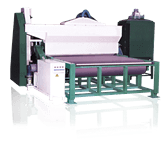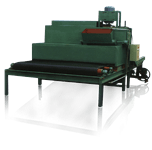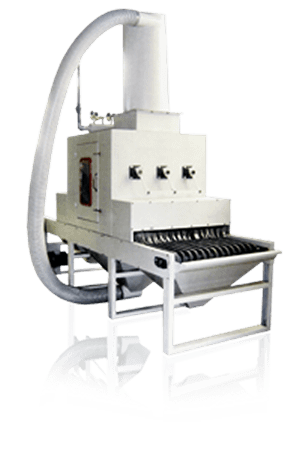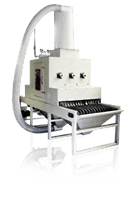General
The machine is a closed loop system consisting of several components.
- Blast Cabin
- Automatic Blast Guns & Transverse Moving System
- Abrasives Blasting System
- Dust Removing Cabin
- Automatic Cyclone Separating System
- Dust Collection
- Motorized Driven Conveying System
- Control System
Blast Cabin
It is a well sealed structure where sand blasting is taken place. Abrasive proof materials and surface treatments enables cabin durable and resistant to abrasives. There are narrow openings at both sides of blast cabin. They allow glass to go in and out. These inlet and outlet openings are specially sealed avoiding abrasives and dust from escaping. There are observation windows allowing real time monitoring.
Automatic Blast Guns & Traverse Moving System
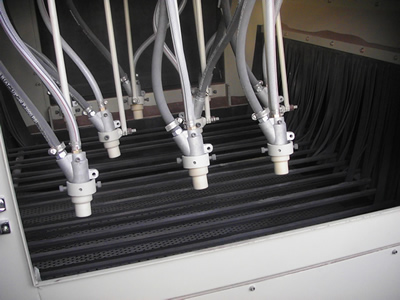
Inside blast cabin, there are several blast nozzles or, sometimes known as spray nozzle, traveling transversely to and fro automatically versus glass traveling direction. Steady oscillating movement of blast guns ensures consistent glass surface blasting finish. Traverse moving speed could be regulated. Position of each blast gun and angle of each blast nozzle are adjustable to obtain optimal glass surface finishes.
Abrasive Blasting System
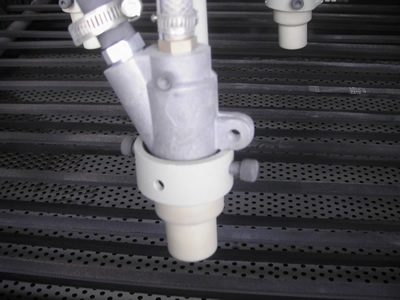
It is a siphon blast system, or sometimes known as suction blast system, using compressed air to create vacuum inside blast guns barrels. The negative pressure pulls abrasive into the blast gun via abrasive proof pipes. Compressed air directs the abrasives through blast nozzles impacting on glass. Abrasives are mixing with compress air during ejection, which fully utilizes compress air. Compress air quantity and abrasive amount are adjustable. Adequate mixing ratio minimizes abrasives and air consumptions.
Dust Removing Cabin
This cabin situates right next blast cabin. A fan blower is equipped inside the cabin. When glass exits from blast cabin after sandblasting, excessive abrasives and dusts are left behind on glass surface. The fan blows off all excessive particles leaving a clean glass surface.
Automatic Cyclone Separating System
It is a standalone structure. Dust separation is achieved by means of cyclone. This process is a very high efficient way to capture reusable abrasives for recycling from disposal dust. During sand blasting, two types of contaminants are generated.
- a) Glass powder physically eroded from glass surface.
- b) Abrasives which become smaller in size or losing sharp edges after impacting on glass. These shattered abrasives are no more helpful for blasting.
Remaining abrasives are still large in sizes with sharp edges. They are reusable. Dusts are light in weight and are separated from reusable abrasives, which are relatively heavier in weight, by this powerful cyclone system. There is an abrasive storage inside separating system. Recycle abrasives are separated and left in the storage and are to be blasted automatically. Virgin abrasives are re-filled and loaded inside the abrasive storage. This is an absolutely closed loop design providing a truly free of dust environment.
Dust Collection
After separating, non-usable abrasive and dust are eventually collected in this dust collector.
Motorized Driven Conveying System
It consists of inlet, main and exit conveyors. Main conveyor is inside blast cabinet. Glass is loaded on inlet conveyor. Motorized driven conveyors bring glass into blast cabinet automatically. Glass eventually comes out from exit conveyor. Speed is adjustable.
Control System
Operations are access from this control panel. All electrical and electronics parts and components are carefully selected.


